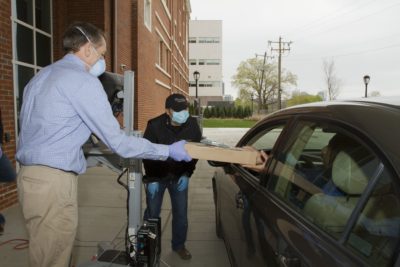
Earlier this week it was my good fortune to participate in the Awake58 virtual town hall focused on North Carolina’s community college response to the recently passed CARES Act. Presidents Kandi Deitemeyer of Central Piedmont Community College, Lawrence Rouse of Pitt Community College, and Garrett Hinshaw of Catawba Valley Community College each provided observations, insights, suggestions, and lessons learned regarding the roll out of CARES and the implications the funds had on their respective campuses. David Baime, senior vice president for governmental relations for the American Association of Community Colleges, also provided helpful information with respect to the national scene.
Quite remarkably, some 7,750 students from these three community colleges on the panel received funding from CARES. These funds provided financing for food insecurity, technology needs, housing, and other services that supported students as they continued with their learning. This was all occurring as campus leaders were shifting to remote learning, teaching, and administering, all while also doing what they could to support the immediate needs of the communities they serve. The leadership demonstrated was simply astounding.
Toward the end of the webinar, the panelists were asked about “lessons learned” and where the future of North Carolina community colleges may be going post-COVID. This is where important lessons could be learned. Some key takeaways for me included:
- Future federal funding should be tied to a head count formula rather than full-time equivalency (FTE) as the latter clearly disadvantages community colleges with significant part-time student populations. Also, it was noted and widely agreed that much better guidance should be provided as funds are made available. The presidents noted the “shifting sands” of the guidance coming from federal government officials and having to backtrack some of the decisions they were making;
- Troubling connectivity and equity issues were on full display. The pandemic quickly disadvantaged those who were already disadvantaged. Connectivity issues were huge, with some colleges needing to deploy hot spots in their parking lots and other locations so that students could study remotely. There was also a tremendous (and costly) need for the dispersal of laptops and software to students;
- Regional cooperation was championed by the presidents as they work collectively to prepare their campuses and communities for the future. While examples were not mentioned overtly, this listener could imagine cooperation through the lenses of a common learning management system across a consortium of colleges, shared development and distribution of curriculum, professional service cooperatives that support many of the “back of the house” functions to reduce costs because of economics of scale and efficiency, and the list goes on.
Clearly COVID-19 was an unprecedented event. A college’s response depended on ingenuity, creativity, courage, and discipline. Leadership at all levels was called upon, and those leaders responded with grace and resolve. There was an imbalance between those who were served well and those who weren’t served at all.
As we rebuild our systems to better withstand the next unprecedented event, we must ask the question constantly: How can this system support all members of our community?
Recommended reading



